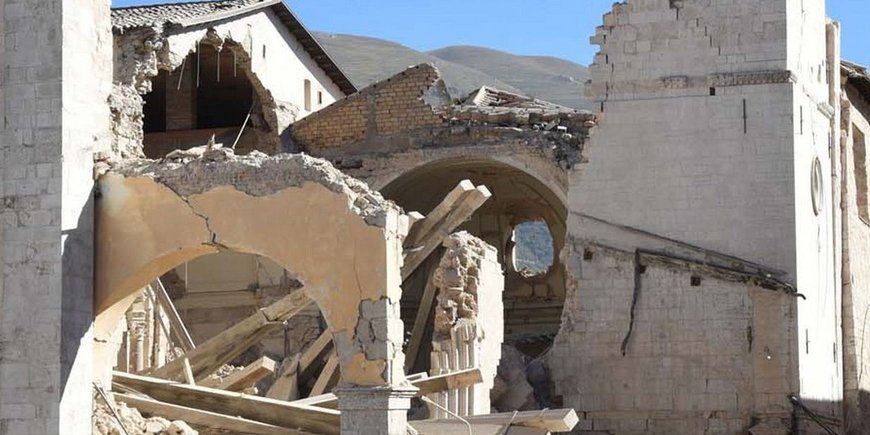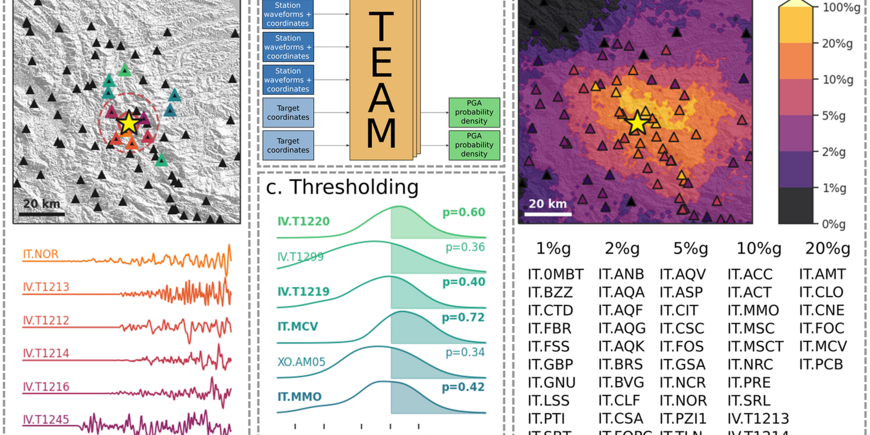Earthquakes are among the deadliest natural hazards. This is because they release tremendous energies, and because of their unpredictability. There is, however, one property that offers the potential for valuable seconds of warning time: An earthquake sends out waves at different speeds - and the first ones, the so-called P-waves, are far less destructive than the S-waves which arrive later. The further away buildings and infrastructure are from the earthquake's source, the more seconds there are, for example, to close gas lines, cut off the power supply, turn traffic lights to red in front of bridges and stop trains. Traditional methods of early warning, however, are relatively inaccurate or offer only very short warning times.
As part of an interdisciplinary collaboration between the German Research Centre for Geosciences in Potsdam and the Humboldt-Universität zu Berlin, Jannes Münchmeyer and his colleagues adapted an artificial intelligence method originally from the field of text comprehension and automated translation, so-called transformer networks, to the analysis of seismic data. Their goal was to achieve faster and often significantly more accurate predictions of the shaking to be expected in the vicinity of an earthquake.
The new method was tested with data sets from the highly earthquake-prone countries of Italy and Japan, both of which have a very dense network of earthquake stations. As is usual with "machine learning", the method was tested on a set of thousands of recorded quakes and, in a sense, adjusted. Afterwards, the researchers provided another set of recorded quakes that the algorithm did not "know" yet. In these retrospective tests with actual earthquakes, there was a significant improvement in warning accuracy. Jannes Münchmeyer says: "We would have gotten a higher number of correct and fast warnings of stronger tremors than with previous approaches."
Another advantage of the new method, he says, is that an estimate of the accuracy of the prediction is also calculated. Frederik Tilmann from the GFZ explains: "This means that thresholds at which warnings are given can be adapted to local conditions and people's needs."
The interdisciplinary work of seismologists and data scientists (computer scientists and mathematicians) was crucial to the success of this research approach and was made possible by the „Helmholtz Einstein International Berlin Research School in Data Science” (HEIBRiDS) initiated by the Helmholtz Association and the Einstein Centre for the Digital Future, as well as the Geo.X-Network.
Original study: Jannes Münchmeyer; Dino Bindi; Ulf Leser; Frederik Tilmann, 2021. The transformer earthquake alerting model: A new versatile approach to earthquake early warning. Geophysical Journal International. DOI: 10.1093/gji/ggaa609
Scientific contact:
Jannes Münchmeyer
Section Seismology
Helmholtz Centre Potsdam GFZ
German Research Centre for Geosciences
Telegrafenberg
14473 Potsdam
Phone: +49 331 288-1228
Email: jannes.muenchmeyer@gfz-potsdam.de
Prof. Frederik Tilmann
Section head Seismology
Helmholtz Centre Potsdam
GFZ German Research Centre for Geosciences
Telegrafenberg
14473 Potsdam
Phone: +49 331 288-1240
Email: frederik.tilmann@gfz-potsdam.de
Media contact:
Josef Zens
Head of Public and Media Relations
Helmholtz Centre Potsdam
GFZ German Research Centre for Geosciences
Telegrafenberg
14473 Potsdam
Phone: +49 331 288-1040
Email: josef.zens@gfz-potsdam.de










![[Translate to English:] Torsten Sachs in front of a climate station on a field](/fileadmin/_processed_/3/9/csm__TorstenSachs_bearbeitet_GS_4a1365ef84.jpeg)

![[Translate to English:] left image flood at the Ahrtal: image from above, several houses are flooded; left image:: Heidi Kreibich;](/fileadmin/_processed_/4/4/csm_Bild2_9af0130e9f.png)



![[Translate to English:] Start der Vega Rakete](/fileadmin/_processed_/6/4/csm_20231201-kachel_Vega-VV23-launch_ESA-CNES-Arianespace_706716b68c.jpeg)









![[Translate to English:] Poster exhibition at the Brandenburg Hydrogen Day at the GFZ, some participants in the foreground](/fileadmin/_processed_/6/5/csm_Erster_Brandenburgischer_Wasserstofftag_GFZ_402fcec95e.jpeg)
![[Translate to English:] Group picture of the participants](/fileadmin/_processed_/9/4/csm_20231108_CAWa-Workshop-Tashkent_Gruppenbild_99ea779d8a.jpeg)

![[Translate to English:] [Translate to English:] Hörsaal](/fileadmin/_processed_/e/6/csm_H%C3%B6rsal_e21ac645fb.jpeg)


![[Translate to English:] The Delegations in the Historic Library on the Telegrafenberg. In the back there are from left to right, the Dutch Ambassador for Germany, Ronald van Roeden, the Dutch Minister for Education, Culture and Science, Robbert Dijkgraaf and the scientific director of the GFZ, Susanne Buiter.](/fileadmin/_processed_/d/b/csm_Kachel-2_9eba4b4212.jpeg)

